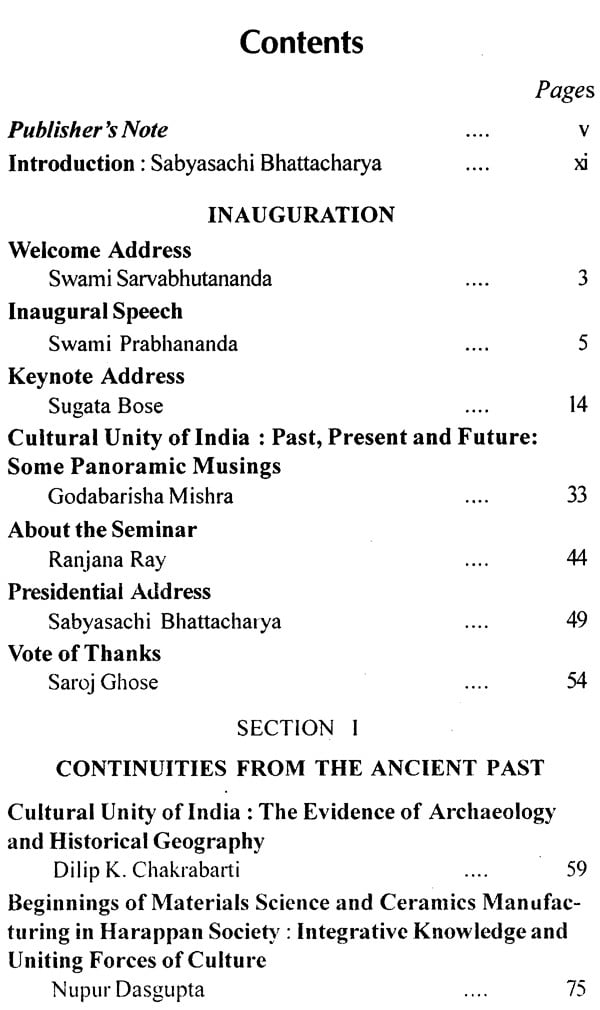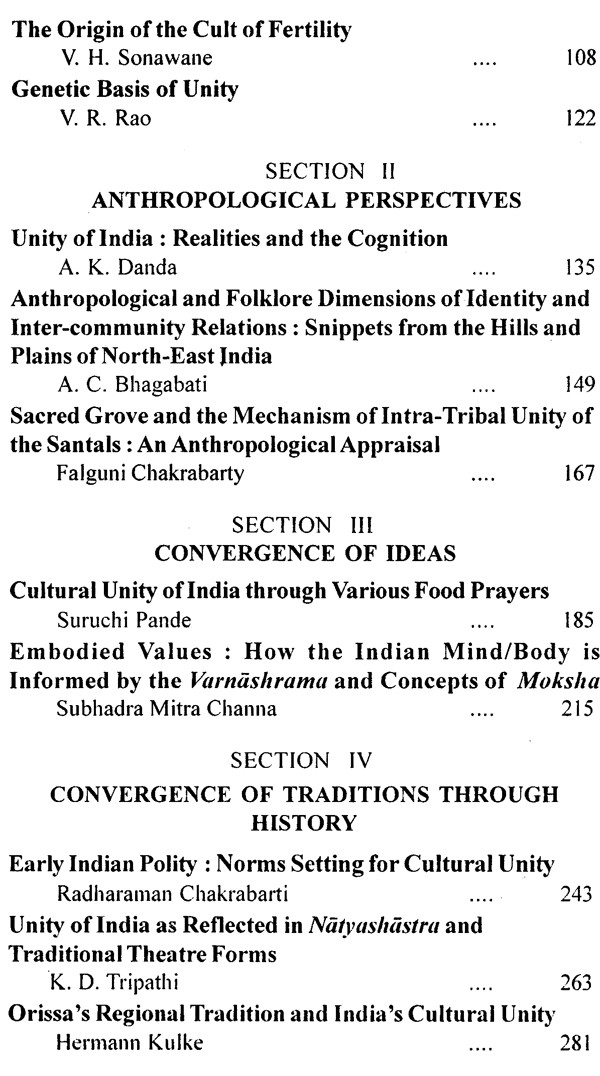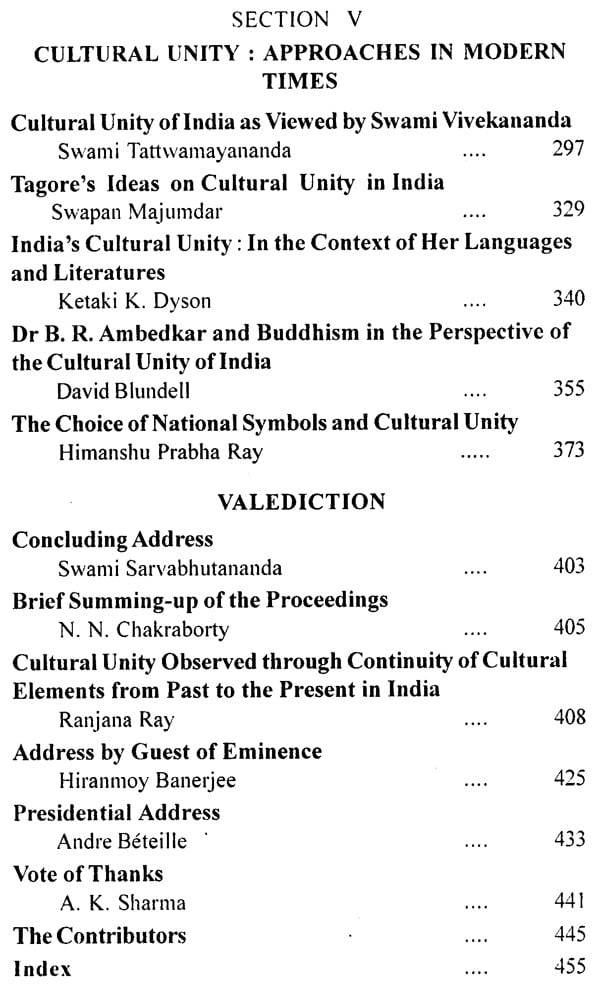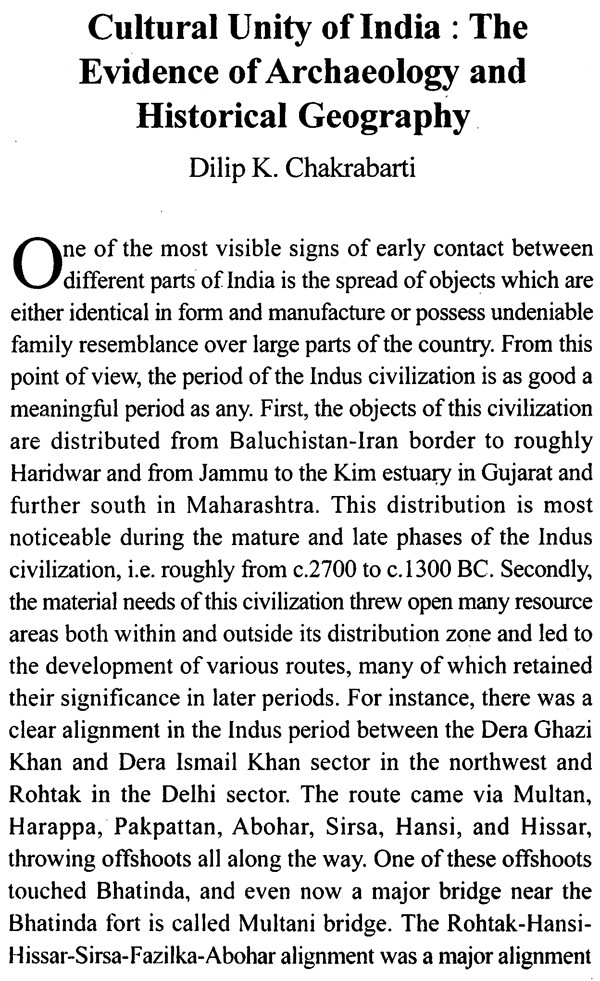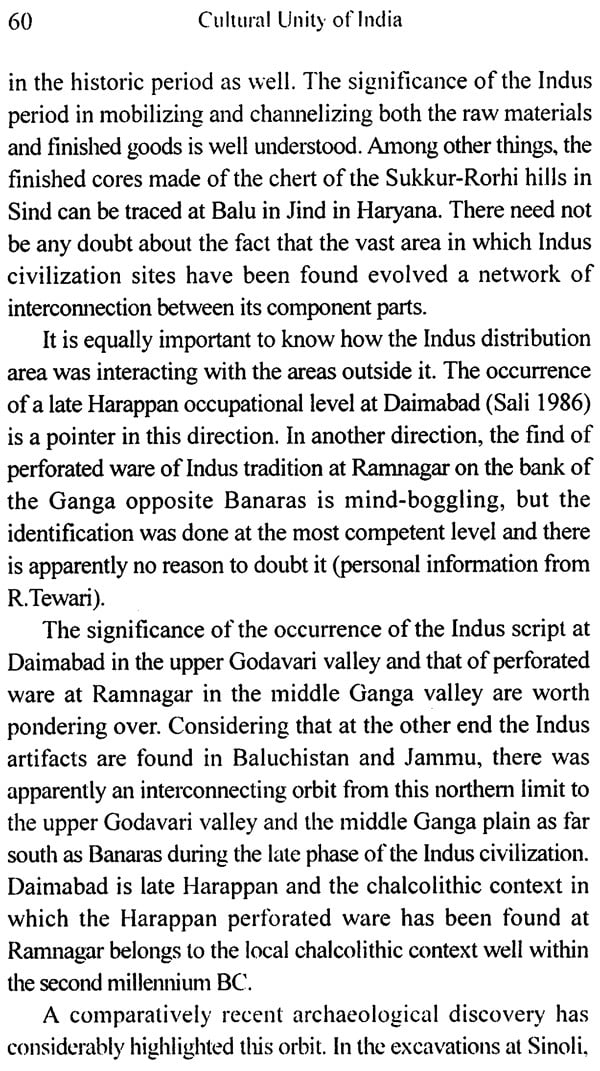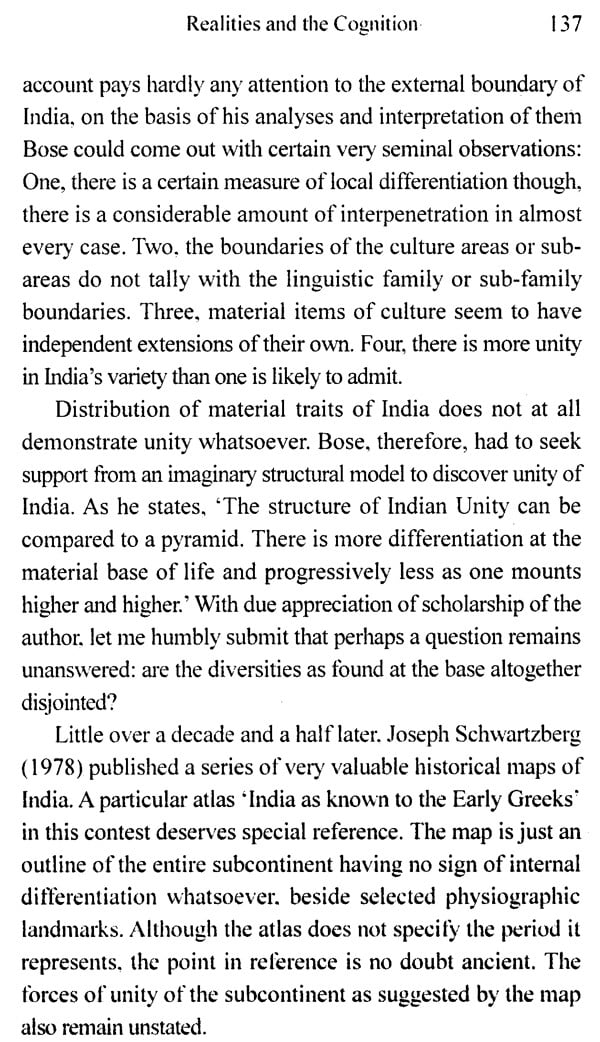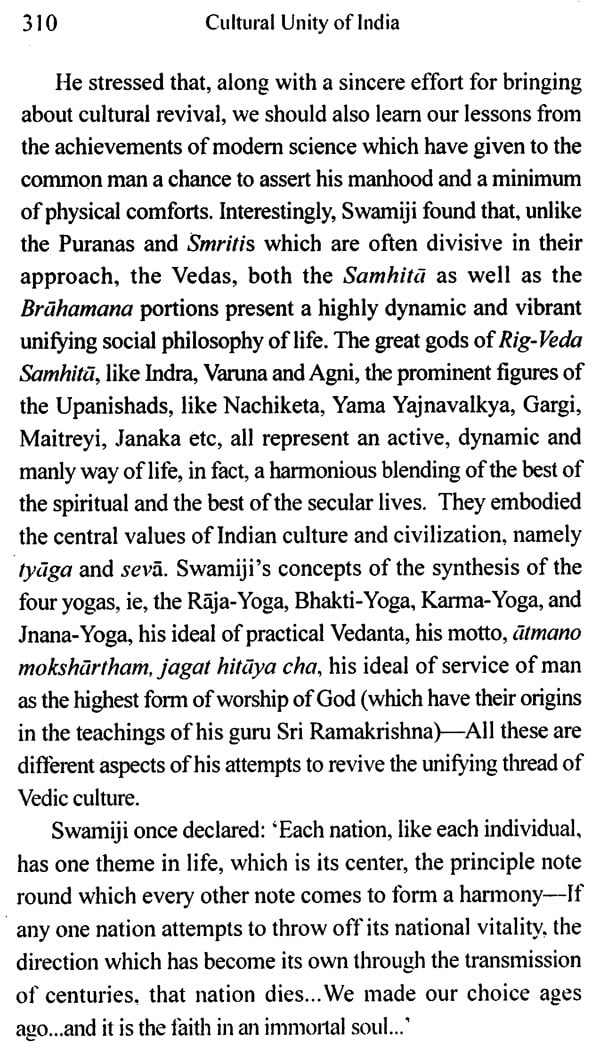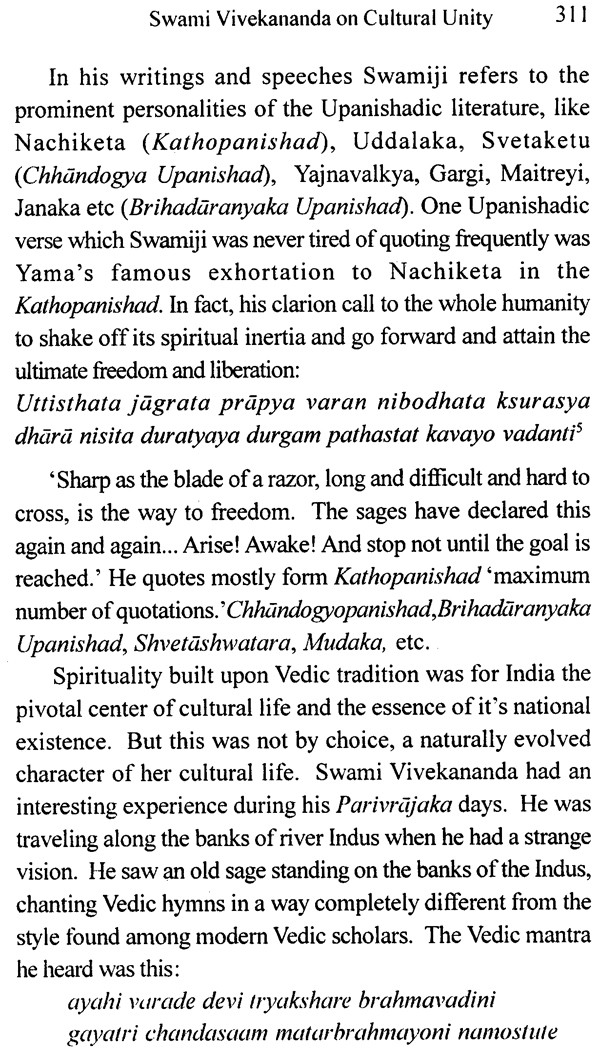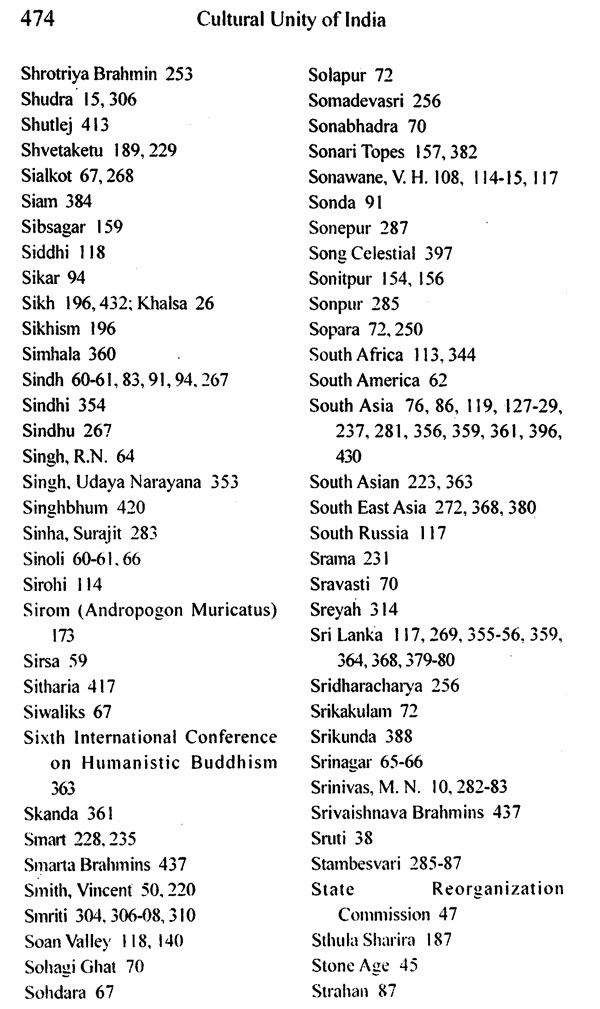
Cultural Unity of India
Book Specification
| Item Code: | NBZ730 |
| Author: | Sabyasachi Bhattacharya |
| Publisher: | Ramakrishna Mission Institute of Culture |
| Language: | English |
| Edition: | 2016 |
| ISBN: | 9789381325209 |
| Pages: | 478 |
| Cover: | HARDCOVER |
| weight of the book: 0.71 kg. | |
| Other Details | 9.00 X 6.00 inch |
| Weight | 710 gm |
Book Description
Since I am a student of history I owe it to my discipline that I should present here, by way of introducing the theme of the conference, my approach to the subject. That is appropriate and expected. However, it is not easy to do so because of the immensity of the subject. In this editorial Introduction I will, in the first place, try to trace historically the evolution of the notion of cultural unity of India in modern times since the reawakening of India in the nineteenth century. I will draw upon a recent book of mine, Talking Back: the idea of civilization in the Indian nationalist discourse (Oxford University Press, Delhi, 2011). In the second section I offer a few reflections on a conceptual and interpretative framework which might be useful to integrate and generalize the empirical data on trends towards cultural unification. Finally, in the third section I attempt an outline of the contributions made by the eminent scholars in the essays collected in this volume.
From the very beginning of the Indian Renaissance we see the Indian intelligentsia in search of a notion that India possessed a unity other than the political unity imposed by Pax Britannica. British colonial historians from James Mill onwards emphasized the absence of unity in pre-British India. It was for the new intellectuals who had received what was called `English education' to discover India's unity in the past. Bankim Chandra Chatterjee and R.G. Bhandarkar were almost exactly of the same age and both graduated in the first batch of the new universities of Calcutta and Bombay. Bankim Chandra in his journal Banga Darshana from 1872 began to give focused attention on the issue of India's unity. 'There are many nationalities [fait] in India. Given the differences in their habitation environment, their language, their racial characteristics, their religious beliefs, they are indeed different. The Bengali, the Punjabi, the Troilangis [people of Telengana], the Marathis, the Rajputs, the Jaths, the Hindus, the Muslims, who will unite with whom? Where there is religious unity there is none in terms of racial affinity, when there is racial affinity there is none in languages used, when there is linguistic unity there is separation in terms of territory....Not only that. Fate has ordained that in India even when there is unity in terms of religion.
Book's Contents and Sample Pages
